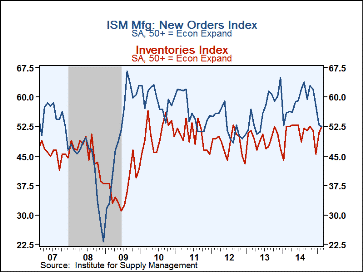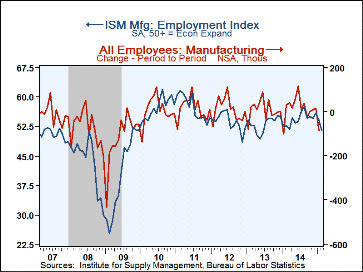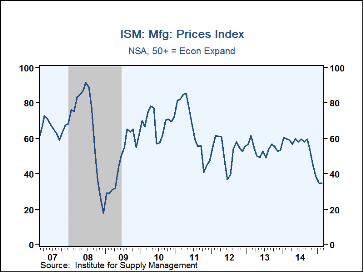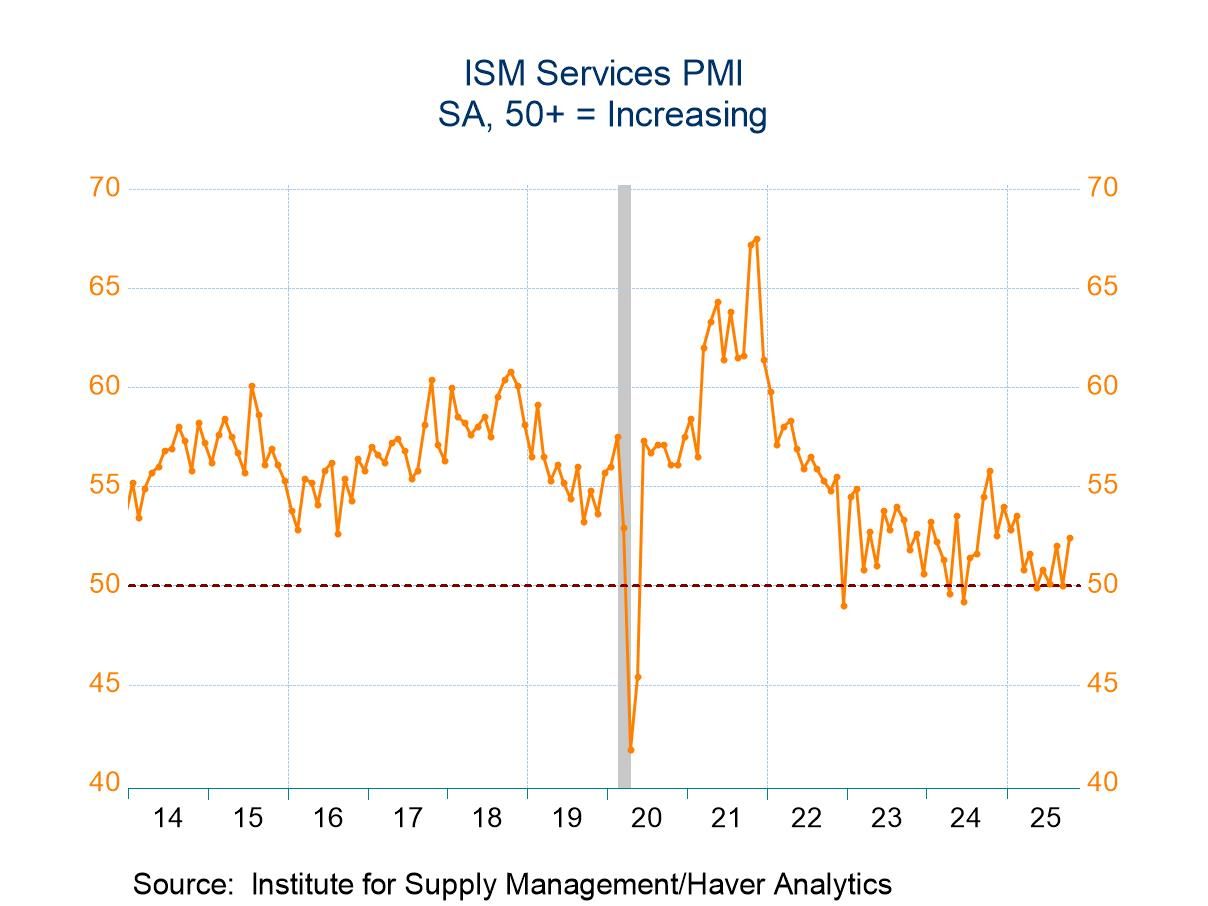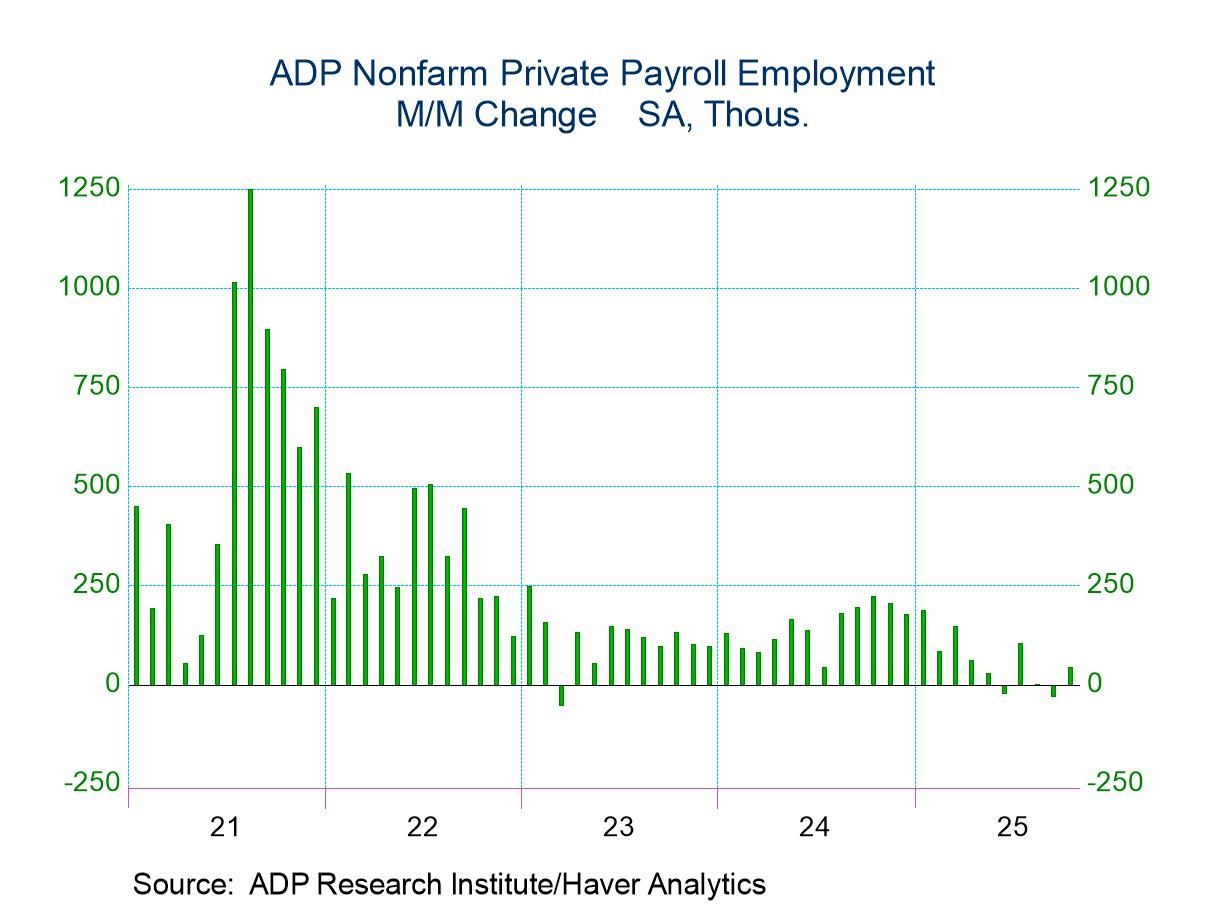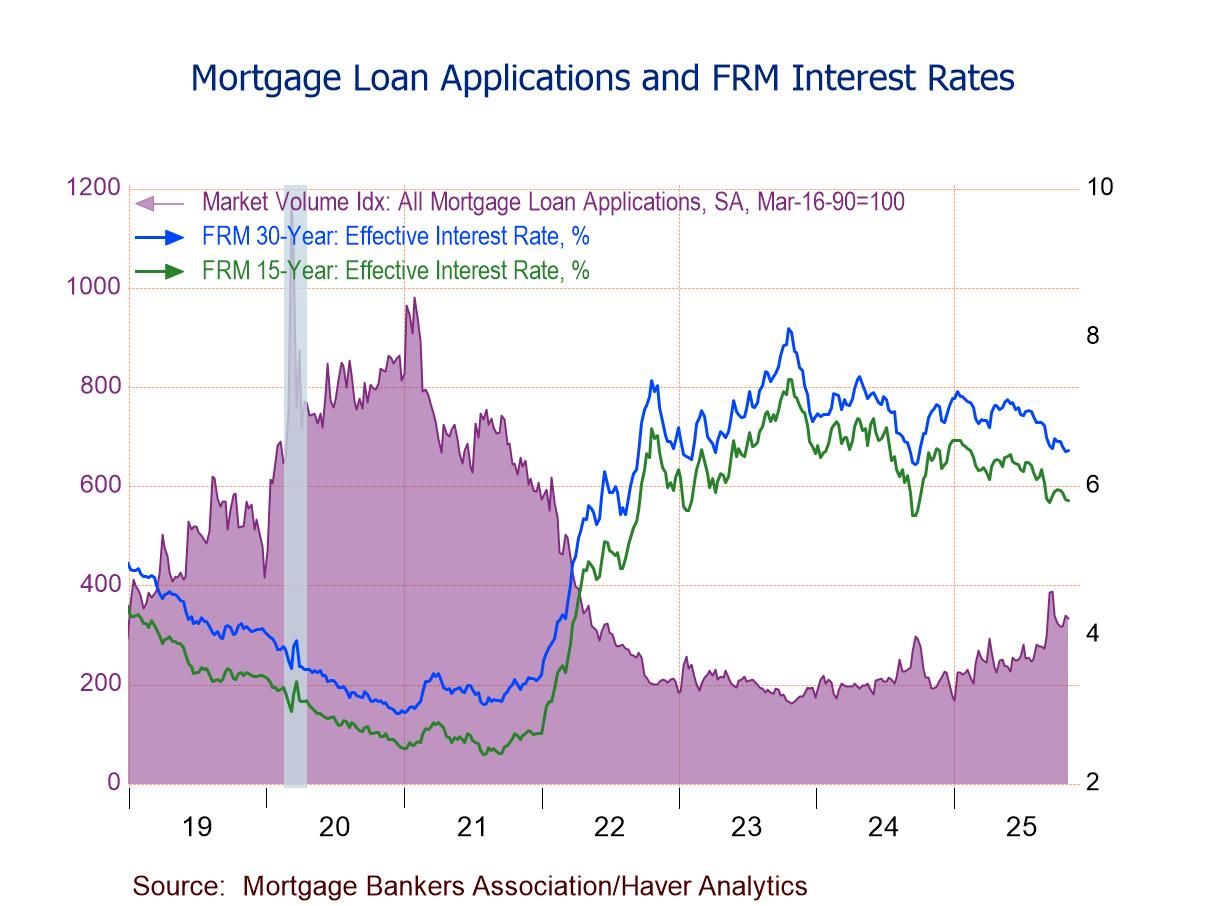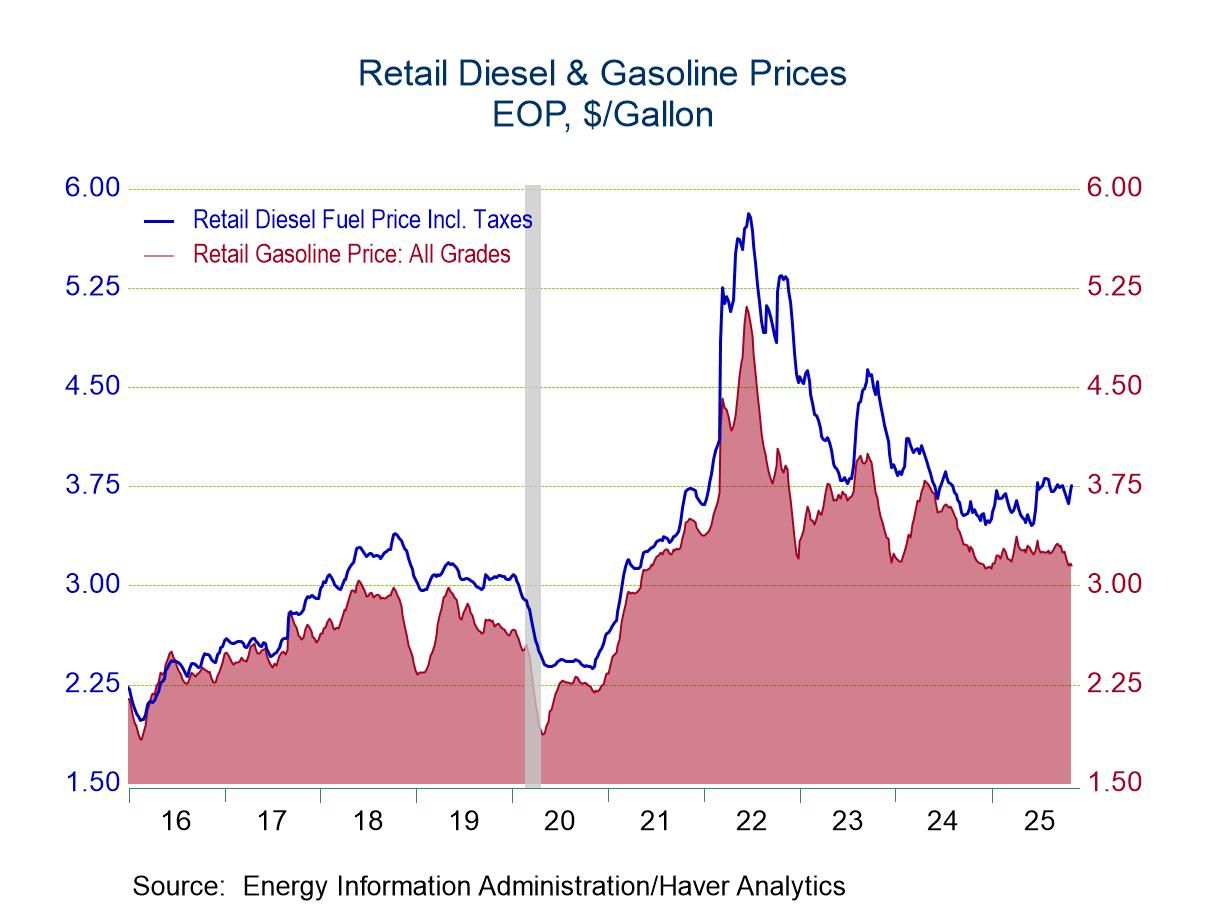 Global| Mar 02 2015
Global| Mar 02 2015U.S. ISM Manufacturing Index Continues to Move Lower
by:Tom Moeller
|in:Economy in Brief
Summary
Factory sector momentum continues to slacken. The February reading from the Institute for Supply Management (ISM) declined to 52.9 following its January drop to an unrevised 53.5. It was the fifth m/m decline in the index in the last [...]
Factory sector momentum continues to slacken. The February reading from the Institute for Supply Management (ISM) declined to 52.9 following its January drop to an unrevised 53.5. It was the fifth m/m decline in the index in the last six months and left it at the lowest level since January of last year. A reading of 53.2 was expected in the Action Economics Forecast Survey. During the last ten years there has been a 74% correlation between the level of the index and the q/q change in real GDP.
A sharp decline in production to 53.7 and employment to 51.4 led the overall index lower. Production was at its lowest level in twelve months while the employment reading was the lowest point since June of 2013. During the last ten years, there has been a 65% correlation between the jobs number and the m/m change in factory sector employment. New orders posted a modest m/m decline to 52.5 and was at the lowest point since May 2013. The export orders index dropped to 48.5, it's lowest level since November 2012. To the upside, the inventories index increased to 52.5, its highest level since last June. The supplies delivery index rose to 54.3, still indicating sharply quickened delivery speeds since December.
The prices paid index held steady at 35.0. Reflecting the decline in energy prices, it was the lowest level since April 2009. To the downside, 38% of respondents reported paying lower prices. Just 8% reported paying higher prices, the fewest since June 2012.
The figures from the Institute For Supply Management (ISM) are diffusion indexes and can be found in Haver's USECON database. The expectations number is in the AS1REPNA database.
| ISM Mfg | Feb | Jan | Dec | Feb'14 | 2014 | 2013 | 2012 |
|---|---|---|---|---|---|---|---|
| Composite Index | 52.9 | 53.5 | 55.1 | 54.3 | 55.7 | 53.8 | 51.7 |
| New Orders | 52.5 | 52.9 | 57.8 | 56.1 | 59.0 | 56.9 | 52.9 |
| Production | 53.7 | 56.5 | 57.7 | 52.1 | 59.2 | 57.5 | 53.7 |
| Employment | 51.4 | 54.1 | 56.0 | 52.8 | 54.5 | 53.2 | 53.8 |
| Supplier Deliveries | 54.3 | 52.9 | 58.6 | 57.8 | 55.0 | 51.9 | 50.0 |
| Inventories | 52.5 | 51.0 | 45.5 | 52.5 | 50.8 | 49.4 | 48.2 |
| Prices Paid Index (NSA) | 35.0 | 35.0 | 38.5 | 60.0 | 55.6 | 53.8 | 53.2 |
Tom Moeller
AuthorMore in Author Profile »Prior to joining Haver Analytics in 2000, Mr. Moeller worked as the Economist at Chancellor Capital Management from 1985 to 1999. There, he developed comprehensive economic forecasts and interpreted economic data for equity and fixed income portfolio managers. Also at Chancellor, Mr. Moeller worked as an equity analyst and was responsible for researching and rating companies in the economically sensitive automobile and housing industries for investment in Chancellor’s equity portfolio. Prior to joining Chancellor, Mr. Moeller was an Economist at Citibank from 1979 to 1984. He also analyzed pricing behavior in the metals industry for the Council on Wage and Price Stability in Washington, D.C. In 1999, Mr. Moeller received the award for most accurate forecast from the Forecasters' Club of New York. From 1990 to 1992 he was President of the New York Association for Business Economists. Mr. Moeller earned an M.B.A. in Finance from Fordham University, where he graduated in 1987. He holds a Bachelor of Arts in Economics from George Washington University.



